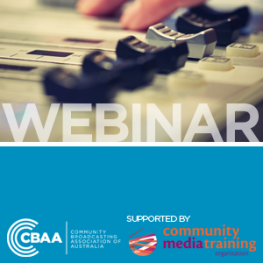
WEBINAR: How to use the Station Community Engagement Survey report - 14 June
The Station Community Engagement Survey is a do-it-yourself, affordable audience research program for community radio stations.
In this webinar, you’ll learn how to interpret and apply the results of your station’s SCES report to:
- Use data about your listeners to plan your stations programs and initiatives.
- Plan your strategy to grow your stations membership or volunteer base.
- Present data to support your pitch to a potential sponsor.
- Use data as a training tool to provide presenters with a picture of their program's audience.
- Use research to support your ACMA licence renewal.
Who is this for?
People from stations that have completed the SCES and received their report, as well as those who may be interested in undertaking the survey in the future.
Presented by:
Matt Balogh, McNair Ingenuity Research
Matt has been conducting audience research for more than 30 years, including more than 8 years as Group Marketing Services Manager at New Ltd. He was a founding partner of McNair Ingenuity Research in 2001. Matt’s qualifications include a BA Hons, MA Hons and a Diploma ins Strategic Marketing. Matt is an accredited QPMR and a Fellow of the Australian Market and Social Research Society. He has lectured in research as post-graduate level for Sydney University, and delivered many guest lectures at other universities in Australia. Matt has been engaged with the community radio sector since 2003.
Christian Geilen, McNair Ingenuity Research
Christian has been with McNair for more than 12 years. Christian began his career in Germany and has a BA in Business Economics. He recently completed a Master of Marketing and Social Research (MMSR) at the Sydney Business School. Christian is a Full Member of the Australian Market and Social Research Society and is an accredited QPMR (Qualified Practicing Market Researcher). Christian has been working in the Community Radio sector for more nearly ten years, and is very familiar with a large number of stations.
Holly Friedlander Liddicoat, CBAA's Marketing & Engagement Assistant.
Holly has been working and volunteering in independent and community music and arts media since 2010. Working at the CBAA as the Marketing & Engagement Assistant, she works with stations to help them access any resources, research and support they may need.
Hosted by the CBAA’s Senior Member Services Officer Emma Couch.
This webinar was held at 6.30pm AEST on Wednesday, 14 June 2017.
Facebook comments